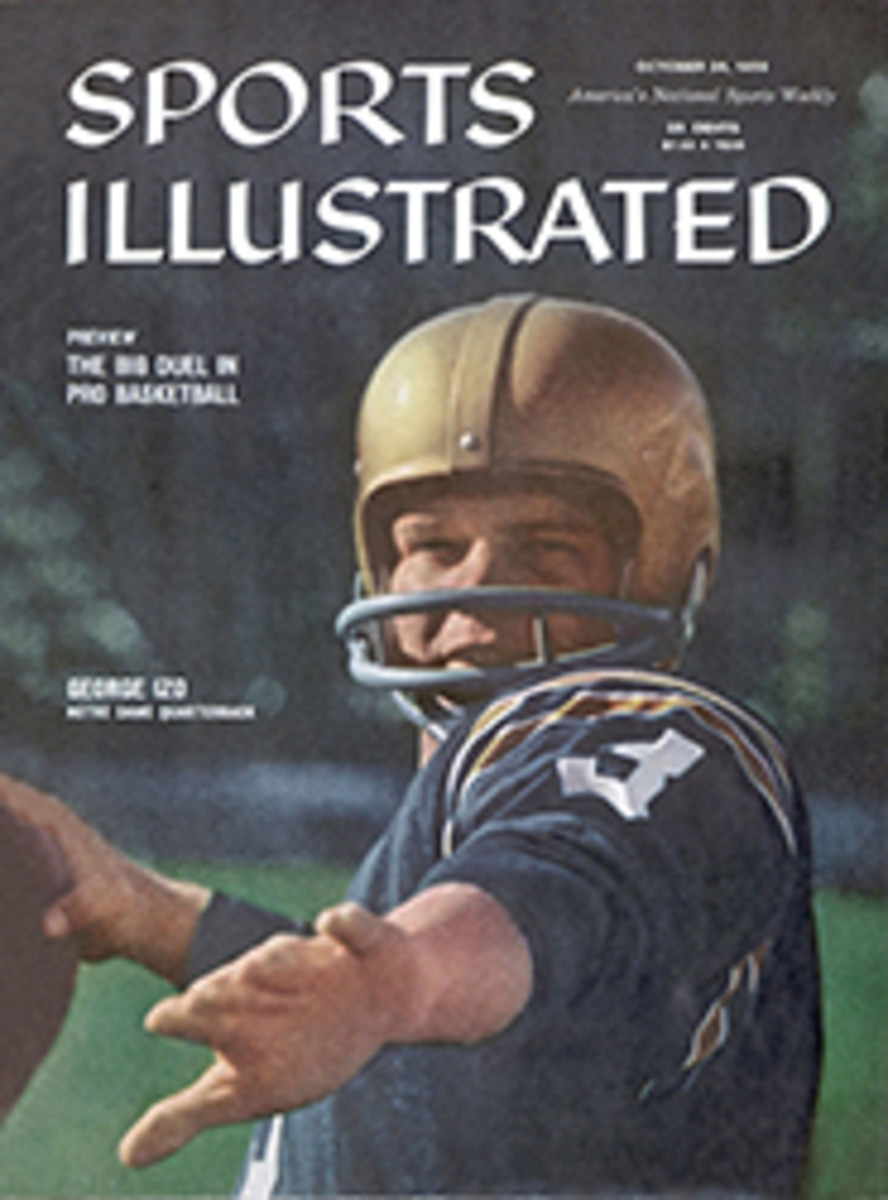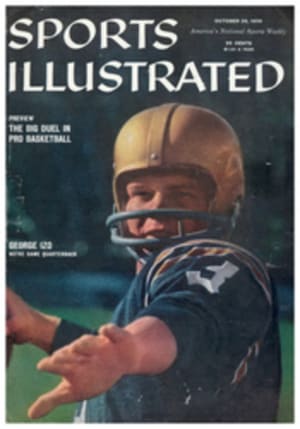
Season of truth
The Spanish bullfight season begins in Castellón de la Plana at the end of February and ends in Zaragoza in the middle of October. This year, during the prescribed 250 or so afternoons of death, the sands were trod as never before. There were some 360 corridas de toros—about 40 more than in any previous year. More than 2,000 bulls were killed, and 1,130 ears (plus assorted tails and hoofs) were awarded to 63 practicing matadors.
Impressive as all this may be, it still must be said that this season did not really begin until June 27, and that it ended less than two months later, on Aug. 21. For many aficionados, it consisted of just 10 bullfights, 49 bulls and 47 ears (plus 11 tails and four hoofs). These were fought, killed and cut by two bullfighters who are brothers-in-law, Luis Miguel Dominguín and Antonio Ordó√±ez.
Dominguín and Ordó√±ez are the two greatest matadors fighting today (SI, Aug. 17). Each has his following. Aficionado Pablo Picasso, speaking for one side, says: "The greatest matador alive today is Luis Miguel." Aficionado Ernest Hemingway disagrees. Almost every day this year he has told somebody that "Antonio is the finest who ever lived."
It was the old question of who is numero uno, but this year it was debated at the summit. During their series together they did not cut ears of every bull they faced. But on each bull, each rival proved that he was indeed worthy of his opponent. Proof of greatness this season came bitterly at times. On July 30 in Valencia, Luis Miguel was seriously gored because he was fighting too close to a treacherous bull in a near hurricane. He fought too close because he was a bullfighter and the bull was a bull and Ordó√±ez was his rival and had already cut an ear that day. Ordó√±ez was gored two days later in Palma on the island of Mallorca, possibly because he had tired himself out staying at the bedside of his injured brother-in-law and rival.
The best test of a bullfighter's courage is his first performance after a serious goring. On Aug. 14 in the sunny southern city of Màlaga the test came for Ordó√±ez and Dominguín. Ordó√±ez, his thigh wound still not fully healed, was barely in condition to be on the sands. Dominguín should not have been there at all. His wound, in the abdomen, had taken too much out of him. Moreover, it was still open, draining and festering. It was a strain for him even to walk.
The Màlaga fight was mano a mano, and each man had to face three Juan Pedro Domecq bulls. Aficionados lucky enough to see it agree it probably was the greatest single bullfight in at least 20 years. Dominguín was tossed once, and the crowd screamed in horror. But, helped by his brother Domingo, the maestro got up slowly and, obviously in pain, continued as if nothing had happened, as if the horns were mere bananas. From the beginning to the end of that memorable day the passes were clean, slow, majestic. Even the swordsmanship, today a dying art, was superb; the six bulls were killed with exactly six sword thrusts. Dominguín and Ordó√±ez cut 17 trophies: Dominguín four ears, two tails and a hoof, Ordó√±ez six ears, two tails, two hoofs.
If the Màlaga fight was the peak of the season, it was also the beginning of the end. For Dominguín had come back much too soon. His strength was not enough to meet the furious schedule that followed—Bayonne, France on Aug. 15 and 16, Ciudad Real on Aug. 17 and Bilbao four days later. In Bilbao, Luis Miguel Dominguín was gored again. He had been too weak to get out of the way when a bull charged a picador's horse, and its horns broke through the bandages and entered his still open wound.
This was the end of the season for Dominguín and, in a sense, for almost everyone else. Ordó√±ez kept fighting, and kept cutting ears, but his inspiration was gone, and on Sept. 11 at Albacete, he became involved in the year's great scandal. The whole thing actually started in Bilbao on Aug. 18, when Ordó√±ez' two picadors, brothers Manuel and Enrique Silvestre Gómez were fined for jabbing their pics too deep into the bulls' backs and twisting them in the wounds. It was the third such fine of the year for both picadors, and according to bullfight rules it is three strikes and out. Both were suspended for two months. Ordó√±ez refused to take their suspensions seriously. He kept them in his cuadrilla, giving them temporary new names. For the next three weeks he forced police at each ring in which he was to appear to swallow the gag. But at Albacete, Civil Governor Santiago Guillen Moreno called off the fight and threw Antonio in jail. When the dust had cleared, Ordó√±ez had been fined 75,000 pesetas ($1,250) and had been suspended from Spanish rings for the rest of the year.
Every year since the beginning of bullfighting, through good seasons and bad, there has been a handy supply of embittered critics mourning for the good old days. This year, despite the brilliance of Ordó√±ez and Dominguín, the dirge is being sounded again. One of the mourners is Robert Graves, the novelist and poet, who unfortunately sees most of his fights on Mallorca. The common theme is that the bulls are smaller and less brave, the matadors all cowardly, and that anyhow all horns are shaved so there is no danger whatsoever.
None of this is true. The bulls today are not smaller than they were 30 years ago. In 1930, the average weight en canal (on the hook) of the meat of bulls killed on May 17 and 25 and on June 8 and 12 in Madrid was 605 pounds. This year, the meat of bulls killed during nine fights from May 14 to 24 averaged 702 pounds. On the hoof, the difference would have been even greater. And as far as the cowardliness of bull and man is concerned, never have so many bullfighters been gored as this year. During one 44-day period (July 25 to Sept. 6), horn wounds sent 42 bullfighters to the hospital. Nor are horns shaved in the major rings of Spain. There is shaving, of course, but not in Madrid, Barcelona, Seville, Valencia or Bilbao.
No one can deny that the bullfight is slowly changing. Two centuries ago it was a mass bloodletting held in the town square for the delight of the king. With Juan Belmonte and the later refiners of his style, bullfighting has become what it is today: at its best, courage, art and grace in the face of the horns of death; at its worst, a boring butchery. Much of the time this past season it has been at its best.
PHOTO
A SWORDSMAN'S DAY was enjoyed at Màlaga by Ordó√±ez (above) and Dominguín. Each of the rivals killed each of his three fine bulls with a single brilliant thrust.

